Back in 2010, local bus operator SMRT Buses brought in the first Mercedes-Benz Citaro into Singapore for demonstration purposes. Registered as SMB136C, the facelifted first-generation Citaro entered service in March 2010, branded as ‘Southeast Asia’s 1st 100% Low Floor Euro V Bus“.
The Citaro was a fitting continuation of SMRT’s legacy of operating Mercedes-Benz buses, following its long history of operating Mercedes-Benz O405 and Mercedes-Benz O405G buses inherited from its predecessor TIBS. Positive public feedback paved the way for more Citaros in Singapore, with production batch orders by SMRT Buses and SBS Transit over the following years bringing in more than 1000 more units to Singapore roads.
Main Article: Mercedes-Benz Citaro
The bus
After SMRT Buses brought in its first batch of wheelchair-accessible Mercedes-Benz OC500LE buses in 2008-2009, there was a need to procure more wheelchair-accessible buses for fleet renewal and expansion.
In Mercedes-Benz’s lineup, the Citaro was the direct successor to the O405 series of buses, which SMRT operated in large numbers (along with the articulated O405G variant). Boasting a full low-floor design, good ride comfort, fuel efficiency and Euro V-compliant emissions standards, SMRT made the decision to procure one unit for trial purposes.
Built by EvoBus in Mannheim, Germany, the Citaro’s modular construction and design meant that it was very similar to other Citaros built for the European market. Several common bus design features in Europe that made its way to SMB136C included hopper windows for ventilation, foldable seats at the wheelchair bay, and inward-folding leaf doors for the exit door. Inclusive of shipping costs, import taxes and other levies such as the Additional Registration Fee (ARF), the bus was said to be acquired at a cost of over $500,000 SGD, the equivalent of the average double-decker bus and likely the most expensive rigid bus ever acquired at that point of time.
The bus was unveiled on 9 March 2010 at a launch ceremony in SMRT’s Ang Mo Kio Depot, exactly one day after its date of registration. Along with a promotional livery, it was marketed as “Southeast Asia’s 1st 100% low-floor Euro V bus“. Fitted with Mercedes Benz’s standard 6.4-litre OM906hLA with 286hp, it delivers impressive performance while paired to a six-speed ZF Ecomat transmission (similar to those on the OC500LE). It is also the first bus in Singapore to feature electronic display signages (EDS) by Gorba AG. SMB136C entered revenue service with SMRT Bus Service 855 on 16 March 2010.
SMRT Buses also evaluated Yutong ZK6126HGC (SMB135E), Zhongtong LCK6121GHEV (SMB137A) and MAN A22 (SMB138Y) buses during this period.
| Basic Technical Specifications | |
| Engine | Mercedes-Benz OM 906 hLA, turbocharged & inter-cooled, 6374cc Power/torque rating of 210 kW (286 hp) @ 2200 rpm / 1120 Nm @ 1200 – 1600 rpm |
| Emission Standard | Euro V compliant BlueTec Selective Catalytic Reduction (SCR) emissions control technology by Daimler AG, requiring diesel exhaust fluids such as AdBlue. |
| Transmission | ZF Ecomat II 6HP 592C gearbox, six-speed automatic |
| Bodywork | Built in Germany by EvoBus, shipped completely built-up (CBU) to Singapore |
| EDS | Gorba imotion Electronic Display Signage (EDS), Orange LED matrix design |
| Air-conditioning | Konvekta P700 roof-mounted air-conditioning pod |
The enhanced passenger comfort on the Citaro is attributed to its lightweight monocoque body, independent suspension for on the front axle, and good body insulation. Weighing in around 10.98 tonnes, the bus is almost 1 tonne lighter than the OC500LE. This increases the mileage and improves fuel efficiency by about seven per cent. The bus operates on Daimler’s BlueTec® SCR engine technology, which converts harmful nitrous oxide emissions into mostly nitrogen and water vapour. This makes emissions from the bus cleaner and safer.
Inside, the driver’s cabin is very different from existing buses. Frequently-operated elements such as door controls are located on the dashboard, instead of being near to the handbrake. The handbrake is located further away from the driver and requires leaning forward to pulling it, and as such, Citaros incorporate a ‘halt brake’ to keep the bus stationary during normal operations, such as at bus stops or traffic lights, and is activated also from the dashboard. As a safety measure, the halt brake is also automatically triggered when the operator leaves the drivers’ seat. In addition, the driver’s window is electrically operated, rather than manually operated in most buses.
The Citaro is also packed with many systems to enhance passenger safety and comfort, such as the Anti-lock Braking System (ABS) and Acceleration slip regulation (ASR) to prevent loss of traction under slippery road conditions. Electronic level control systems automatically adjust the vehicle height at each wheel to counter uneven load distribution inside the bus. Electronic brakeforce distribution (EBD) and Electronic Stability Control (ESC) control detect and reduce the loss of traction by varying the amount of braking pressure applied to individual wheels to maximise stopping power while maintaining vehicular control.
SMB136C uses red fabric seat covers, a default option offered by Mercedes-Benz. The seating layout is very much identical to its European counterparts, including seven rear-facing seats due to the axle placement. Altogether, SMB136C accommodates 37 seating and 44 standing passengers. For passengers-in-wheelchair (PIW), the bus offers one specially allocated space near the exit. This helps to minimise PIW movement within the bus, so that PIW boarding and alighting can be performed with the least hassle. The rear door is equipped with a manual wheelchair ramp, and the backrest for the PIW lot comes with a fold-down seat for two.
Air-conditioning is fully integrated into the structure of the bus, with no vents for passengers to operate. Instead, cool air comes out from holes in the ceiling of the vehicle. A single buzzer for the stopping bell and rear door operation, and does not feature SMRT’s “Doors are closing” exit door chime, or SMRT’s pre-recorded announcements. The Citaro standard Bus Stopping indicator is built into the bus’ design, with a single illuminated “STOP” when the bell is pressed. Various stickers pasted around the bus are similar to those used in European designs.
SMB136C was advertised with a ‘kneeling’ feature, which automatically lowers the left side of the bus when the doors are open, to minimise the gap between the kerb and the bus, and also aids in the boarding of wheelchair-bound passengers. This feature was later disabled and on subsequent Citaros as passengers found it a disruption to ride comfort.
Starting from 16 March 2010, SMB136C was placed under a one-year trial on various trunk and feeder routes. Passengers could give their feedback at smrt.com.sg/citaro during the trial period. The trial was ultimately successful, with SMRT placing a production batch order for a further 50 buses.
SMB136C is licensed to carry 83 passengers, including 38 seating passengers, 44 standing passengers and one passenger-in-wheelchair.
Removal of advert:
By end 2015, SMRT finally removed the promotional advertisement of SMB136C, which had been in bad shape after being stuck on for over five years. The bus appeared on revenue service in full SMRT livery for the first time in December 2015.
Shortly afterwards, the original red and black SMRT logos were replaced with full-red SMRT logos, reflecting SMRT’s updated company logo.
As of 2018, the bus is a designated Training Bus and permanently assigned to training duties. It is no longer assigned to revenue service.
Legacy
The trial of SMB136C was successful, generating positive feedback from many commuters. Following the trial, SMRT Buses initiated the purchase of 50 more Mercedes-Benz Citaro buses in the first production batch, as part of its fleet renewal programme. This was spurred by LTA granting public buses an exemption from the Additional Registration Fee (ARF), making importing the Citaros significantly more affordable.
SBS Transit also evaluated SMB136C and had another Citaro (SMB148T) modelled with its own interior specifications prior to delivery to SMRT Buses. The company proceeded to make a bulk order of 300 units, and subsequent batches of orders introduced over a thousand units to Singapore’s roads.
Gallery: (Exterior)
Gallery: (Interior)
External Links & References:
- Mercedes-Benz Citaro for South-East Asia: SMRT to test the Citaro in Singapore for the local market – Daimler [Accessed 16/04/20]
- The Citaro story: an unprecedented tale of success – Daimler [Accessed 16/04/20]
Back to Mercedes-Benz Citaro
Back to Bus Models
Back to Bus Articles

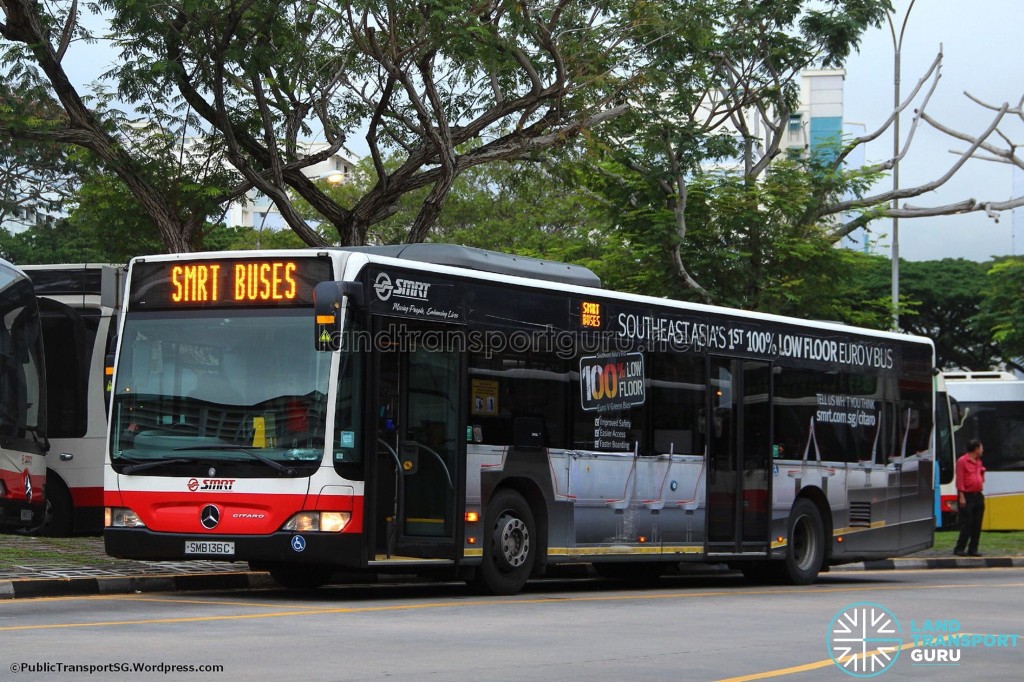

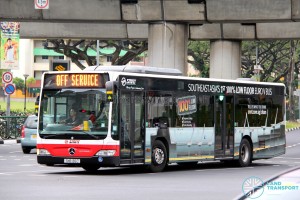
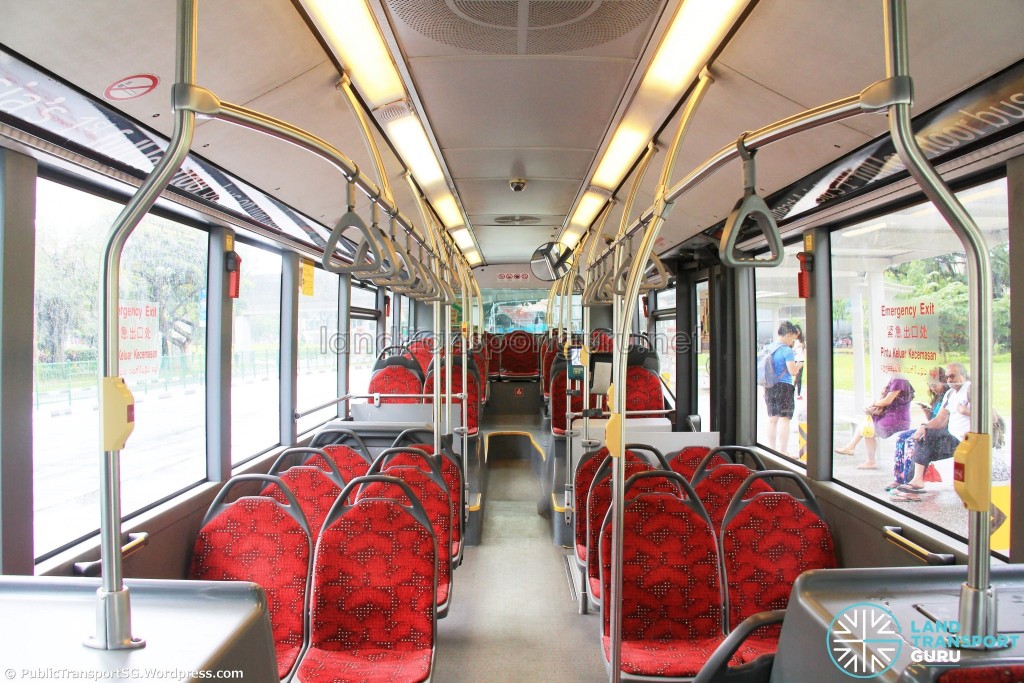
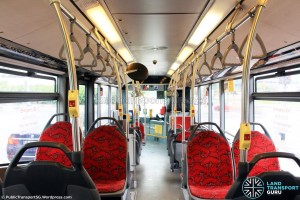
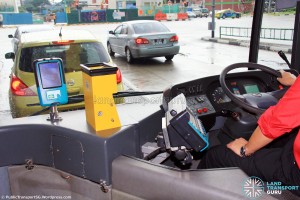
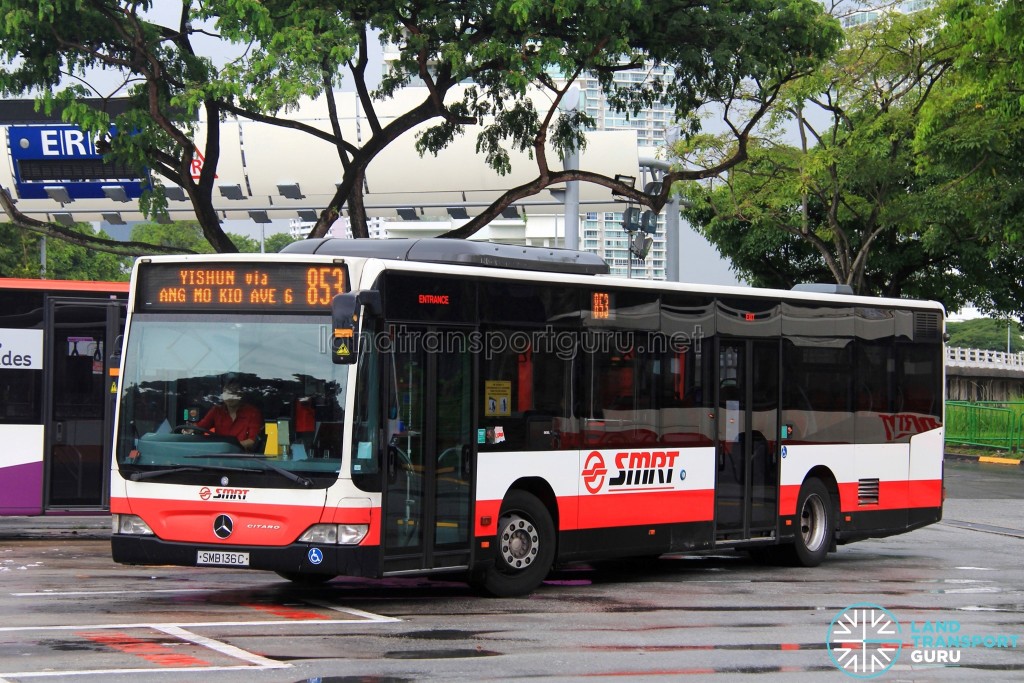
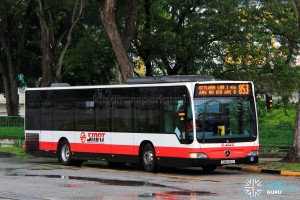
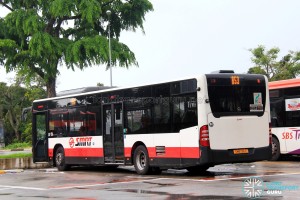
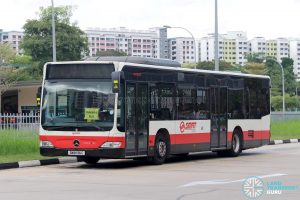
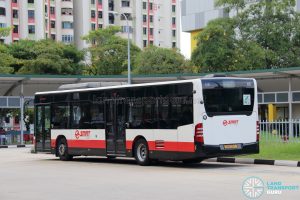
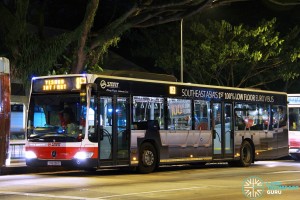
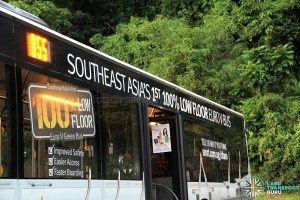
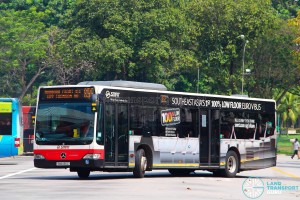
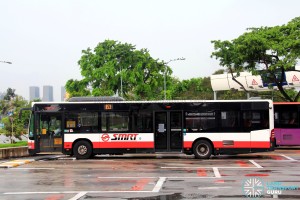
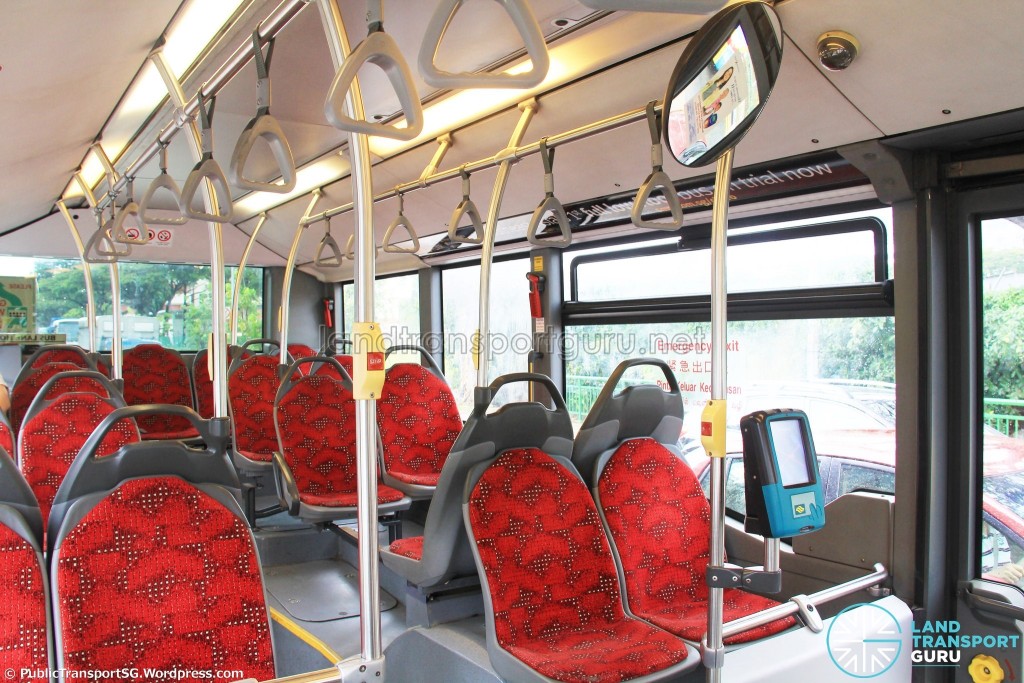
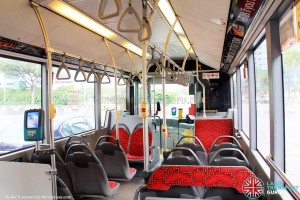
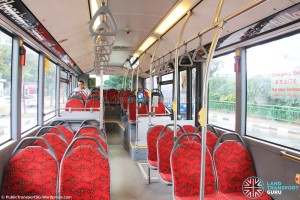
The voith 4 speed is also decent provided PTO dun restrict the torque of the bus especially at 1st gear. SBS 6000 to about 6200 series perform quite decently and is frequently on sv 53. With the exception of the early series the rest of the sbs voith have severely restricted torque at 1st gear thus making the bus extremely underpowered at 1st gear
Huh repeat same day 😛🤣🤣😛
In fact,all Citaro in SG should be equipped with ZF6 speeder
The voith 4 speed is also decent provided PTO dun restrict the torque of the bus especially at 1st gear. SBS 6000 to about 6200 series perform quite decently and is frequently on sv 53. With the exception of the early series the rest of the sbs voith have severely restricted torque at 1st gear thus making the bus extremely underpowered at 1st gear